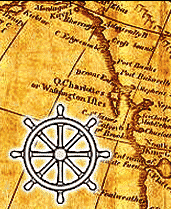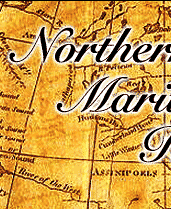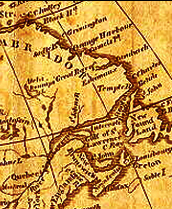|
Northern Maritime Research has been documenting shipwrecks since 1979. Copies of this research are made available on CD-ROM to raise funds for the continuation of this project. The `NMR Database' CD (2000 version) features more than 100,000 North American wrecks from the 1500s to 1990s.
Causes of Shipwrecks: To over-simplify the cause of shipwrecks, they can be divided into nature-related and human-related causes. The nature-related causes include:
1. Atmospheric: wind of various degrees from squall to hurricane; and reduced visibility by fog, rain, snow, etc.
2. Oceanic: currents, tides, etc.
3. Climatic: ice, icebergs
4. Tectonic: earthquakes, volcanos, tidal waves The human-related causes include:
1. Economic: inferior construction, equipment or repair; improper loading, fraud; piracy; mutiny; arson; war
2. Seamanship: inferior quality or behavior of captain, officers or crew in navigation or ship-handling
3. Technological: inaccurate charts, new technology, lack of safe shelter
4. Other: fire of unknown origin, disease, etc. These various causes result in ships foundering, leaking, capsizing, colliding, exploding, catching on fire, going missing, being abandoned, break downs, being torpedoed, mined, bombed, captured, seizure, sabotaged, or scuttling to avoid capture. Shipwreck Hot Spots
Hot spots or areas of high shipwreck concentrations (not including the approaches and entrances of major harbors). These include: ATLANTIC HOTSPOTS
Cape Race, NF., Sable Island, NS., Cape Breton, NS., St. Paul Island, NS., Cape Sable Island, NS., Grand Manan Island, NB., Mount Desert Island, ME., Isle of Shoals, NH., Cape Ann, MA., Cape Cod, MA., Nantucket Island, MA., Block Island, RI., Long Island, NY., Sandy Hook, NJ., Cape May, NJ., Cape Henlopen, DE., Cape Charles, VA., Cape Henry, VA., Cape Hatteras, NC., Cape Lookout, NC., Cape Fear, NC., Cape Romain, SC., Cape Canaveral, FL., Straits of Florida, FL., Florida Keys, FL., Key West, FL., Dry Tortugas, FL., Cape San Blas, FL., Santa Rosa Island, FL., Dauphin Island, AL., Chandeleur Islands, MS., Mississippi River, MS.(+), Matagorda, TX., Padre Island, TX. PACIFIC HOTSPOTS
Strait of Georgia, BC., Barkley Sound, BC., Strait of Juan de Fuca, WA./BC., Puget Sound, WA., Cape Flattery, WA., Cape Disappointment, WA., Columbia River, WA./OR., Cape Blanco, OR., Cape Mendocino, CA., Point Arena, CA., Point Reyes, CA., Point Arguello, CA., Point Honda, CA., Point Conception, CA., Channel Islands National Park, Santa Barbara, CA., Santa Catalina Island, CA., San Clemente Island, CA., Baja California, Mexico, Gulf of California, Mexico. © 2025 Northern Maritime Research |








